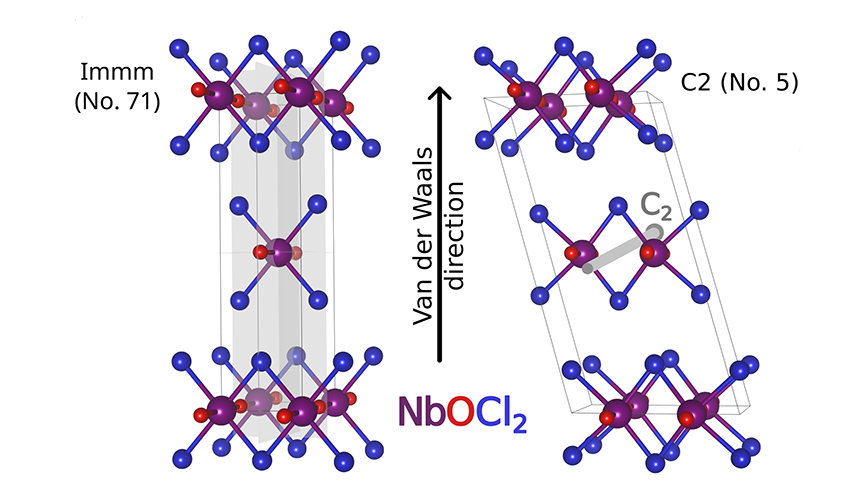Emergent chirality and enantiomeric selectivity in layered NbOX2 crystals
The spontaneous emergence of chirality in crystalline solids has profound implications for electronic, optical, and topological properties, making the control of chiral phases a central challenge in materials design. Here, we investigate the structural and electronic properties of a new family of layered compounds, , and explore the connection between their achiral phase and chiral phase. Through first-principles calculations, we identify an intermediate achiral phase that bridges the high- and low-symmetry phases within a three-dimensional order parameter space. The insulating phase exhibits unique electronic properties, including flat Niobium -orbital bands near the Fermi level associated with an obstructed atomic limit (OAL), hosting topologically non-trivial surface states under specific cleavage conditions. By analyzing the Born-Oppenheimer energy surfaces (BOES), we find that the shallow energy minima of the phase suggest that the intermediate phase may be stabilized either by ionic quantum or thermal fluctuations, and the consequent lattice anharmonicity, or by external factors such as pressure. Additionally, we show how an external electric field, by breaking the necessary symmetries, biases the system toward a preferred chirality by lifting the energy degeneracy between the two enantiomers. This, combined with the small energy barrier between the enantiomers in the phase, enables handedness control and allows us to propose a mechanism for selective handedness stabilization by leveraging electric fields and temperature-dependent anharmonic effects. Our findings establish a framework for understanding chirality emergence in layered materials and offer a pathway for designing systems with tunable enantiomeric populations.
Read the whole article by Gutierrez-Amigo et al. on arXiv.
